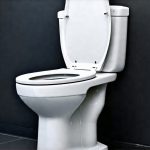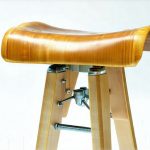Chronic constipation is a surprisingly common condition, affecting millions worldwide and significantly impacting quality of life. It’s more than just infrequent bowel movements; it’s characterized by difficulty passing stools, straining during defecation, a feeling of incomplete evacuation, and often, abdominal discomfort. While occasional constipation is usually due to factors like diet or hydration, chronic constipation persists for weeks or even months, requiring investigation to identify the underlying cause and appropriate management strategies. Understanding why someone experiences chronic constipation isn’t always straightforward, as it can stem from a complex interplay of lifestyle, anatomical factors, neurological conditions, and other medical issues. Considering proactive food rituals can also aid in maintaining regular bowel movements.
The diagnostic journey often begins with a thorough patient history and physical exam, but frequently requires further testing to pinpoint the root of the problem. These tests aren’t about finding blame; they’re about gathering information. Doctors aim to differentiate between functional constipation (where no underlying organic cause is found) and secondary constipation (caused by another medical condition). This distinction dictates treatment approaches, ranging from dietary adjustments and lifestyle modifications to more targeted therapies addressing specific health concerns. The goal isn’t simply to relieve the symptoms but to understand why they are occurring in the first place, leading to a long-term solution. Focusing on daily rhythms can also support consistent digestive health.
Initial Assessments & Non-Invasive Testing
The first steps typically involve relatively simple assessments that provide valuable clues. A detailed medical history will explore factors like diet (fiber intake, fluid consumption), exercise habits, medication use (certain drugs can contribute to constipation), and any prior bowel habit changes. Doctors will also inquire about family history of gastrointestinal disorders or related conditions. Physical examination focuses on the abdomen to check for tenderness, masses, or signs of distension. A digital rectal exam may be performed to assess for structural abnormalities or impacted stool.
Beyond these initial steps, several non-invasive tests are commonly employed. The Bristol Stool Form Scale is a visual tool used to categorize stool consistency, helping both patients and doctors objectively track bowel habits. Keeping a bowel diary for a week or two can provide invaluable information about frequency, timing, and characteristics of bowel movements. This helps identify patterns and potential triggers. Blood tests are often ordered to rule out underlying medical conditions like thyroid disorders, diabetes, celiac disease, or electrolyte imbalances that could contribute to constipation. These initial assessments help determine if further, more specialized testing is needed. Additionally, addressing pH balance can optimize gut health.
These early investigations play a crucial role in streamlining the diagnostic process. They can frequently identify lifestyle factors contributing to constipation and guide initial management strategies before resorting to more invasive procedures. Often, adjustments to diet, hydration, and exercise are sufficient for managing mild to moderate chronic constipation, but when these interventions aren’t enough, or if red flags are present (such as rectal bleeding, unexplained weight loss, or severe abdominal pain), further investigation is warranted. Planning ahead with meal prep containers can support a fiber-rich diet and consistent hydration.
Advanced Diagnostic Procedures
When initial assessments don’t provide a clear diagnosis, more advanced procedures become necessary. These aim to evaluate the function and structure of the colon and rectum in greater detail. Colonoscopy involves inserting a flexible tube with a camera into the rectum to visualize the entire colon. It’s primarily used to screen for colorectal cancer but can also identify structural abnormalities like polyps, strictures (narrowing), or tumors that might be contributing to constipation. Biopsies can be taken during colonoscopy if suspicious areas are identified.
Another crucial test is defecography. This involves filling the rectum with a barium paste and then using X-rays to observe the rectum’s shape and function during simulated defecation. It helps identify issues like rectocele (prolapse of the rectum), intussusception (telescoping of one part of the bowel into another), or weakness in the pelvic floor muscles. Anorectal manometry measures the strength and coordination of the anal sphincter and rectal muscles, assessing their ability to sense distension and initiate defecation. This test can help identify problems with evacuation. These advanced procedures provide a more detailed understanding of the underlying mechanisms contributing to chronic constipation, guiding treatment decisions. Incorporating post-meal rituals can also aid in digestion.
Colonic Transit Studies
Colonic transit studies evaluate how quickly stool moves through the colon. They are particularly useful in differentiating between slow-transit constipation (where the colon doesn’t propel waste efficiently) and normal-transit constipation (where the problem lies with evacuation rather than propulsion). The process typically involves swallowing radiopaque markers – small capsules containing substances visible on X-ray. Several days later, an abdominal X-ray is taken to assess how many markers remain in the colon.
- A significant number of markers remaining after a specified period indicates slow colonic transit.
- Normal transit times vary, but generally, most markers should have exited the colon within 72-96 hours.
- This test helps identify whether the issue lies with the movement of stool through the colon itself or with other factors like pelvic floor dysfunction.
Rectal Volume Biofeedback
Rectal volume biofeedback is a specialized technique used to help patients improve their ability to sense the need to defecate and coordinate the muscles involved in evacuation. It’s particularly useful for patients with dyssynergic defecation – a condition where the pelvic floor muscles don’t relax properly during attempts to pass stool, hindering evacuation. The procedure involves inserting a small balloon into the rectum and inflating it gradually.
- Patients are then asked to identify when they feel the urge to defecate.
- This allows them to learn how to recognize rectal distension and coordinate their pelvic floor muscles for more effective emptying.
- Biofeedback sessions typically involve visual or auditory feedback, helping patients understand the relationship between muscle activity and sensation.
This technique requires several sessions with a trained therapist but can significantly improve bowel function in individuals with dyssynergic defecation. It’s often combined with other therapies like dietary changes and pelvic floor exercises to achieve optimal results. The goal is to retrain the body’s natural mechanisms for healthy bowel movements. Routines that help clear gas overnight can also be beneficial.
Pelvic Floor Muscle Evaluation & Therapy
The pelvic floor muscles play a critical role in bowel control, and dysfunction in these muscles can contribute significantly to chronic constipation. Pelvic floor muscle evaluation involves assessing the strength, coordination, and tone of these muscles. This is often done by a specialized physical therapist trained in pelvic health. The evaluation may involve external palpation (feeling the muscles externally) or internal examination (using a gloved finger inside the rectum to assess muscle function).
- If dysfunction is identified, pelvic floor therapy can be implemented.
- This typically involves exercises designed to strengthen weak muscles, relax overactive muscles, and improve coordination.
- Biofeedback may also be incorporated into the therapy sessions, providing real-time feedback on muscle activity.
Pelvic floor therapy isn’t just about strengthening; it’s about restoring balance and proper function. It addresses issues like pelvic organ prolapse (which can contribute to constipation) and helps improve overall bowel control. This approach is particularly effective for patients with dyssynergic defecation or those who have difficulty evacuating stool despite adequate colonic transit.
It’s essential to remember that chronic constipation is a complex condition, and the diagnostic process may require multiple tests and consultations with different specialists. The information provided here is intended for general knowledge and informational purposes only, and does not constitute medical advice. It is crucial to consult with a qualified healthcare professional for any health concerns or before making any decisions related to your health or treatment.


















